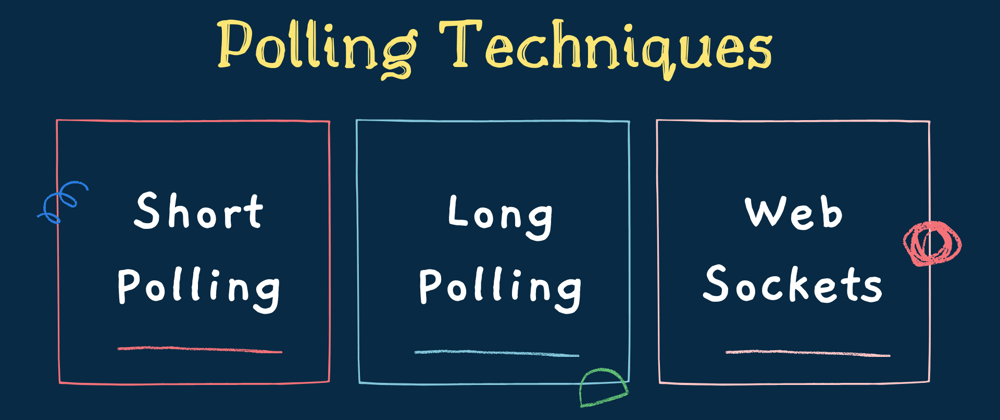Hello coders!! Today we will discuss various techniques to retrieve data from the server.
Just before we move ahead I hope you are aware of client-server architecture.
The basic web application with the client-server model flow will be as follows:-
- A client makes an HTTP request requesting a web page from a server.
- The server calculates the response
- The server sends the response to the client
Let's start with what exactly polling means?
Polling is a technique by which the client asking the server for new data regularly.
Short Polling
Short polling is an AJAX-based timer that calls at fixed delays.
In Short Polling Technique:
- Client makes a request to the server
- Server can respond in two ways:
- It sends an empty response
- It sends data object in its body (JSON Object)
- As soon as a client receives the response from the server, it will wait for a couple of seconds and repeat the above process.
Some challenges in short-polling:
Making repeated requests to the server wastes resources as each new incoming connection must be established, the HTTP headers must be passed, a query for new data must be performed, and a response (usually with no new data to offer) must be generated and delivered. The connection must be closed and any resources cleaned up.
Long Polling
Long Polling works differently from short polling in the following way:
- Client makes a request to the server
- Server can respond in two ways:
- If it has some new data available, it can respond right away.
- If it doesn't have anything new data, it will keep that connection open for a period of time and when it receives new data it will respond back with updated data.
In short, it is a mechanism where the client continuously asks the server for new information using regular HTTP requests & the server stalls its answer when it has nothing new to report.
As long as the client makes sure it constantly has a polling request open, it will receive information from the server quickly after it becomes available.
To prevent connections from timing out (being aborted because of a lack of activity), long polling techniques usually set a maximum time for each request, after which the server will respond anyway, even though it has nothing to repeat, after which the client will start a new request.
Periodically restarting the request also makes the technique more robust, allowing clients to recover from temporary connection failures or server problems.
A busy server that is using long-polling may have thousands of waiting requests and thus TCP connections open. NodeJS, which makes it easy to manage many connections without creating a separate thread of control for each one is a good fit for such a system.
Some challenges in long-polling:
- Message ordering and delivery guarantees: Message ordering cannot be guaranteed if the same client opens multiple connections to the server.
- If the client was not able to receive the message then there will be possible message loss.
- Performance and scaling
- Device support and fallbacks
Web Sockets
WebSocket is a computer communication protocol that provides full-duplex communication channels over a single TCP connection.
The WebSocket protocol enables interaction between a client and a web server with lesser overheads, providing real-time data transfer from and to the server. WebSockets keeps the connection open, allowing messages to be passed back and forth between the client and the server. In this way, a two-way ongoing conversation can take place between the client and the server.
Some advantages of Web Sockets over long-polling:
- WebSockets keeps a unique connection open while eliminating latency problems that arise with Long Polling.
- Long polling is much more resource-intensive on servers whereas WebSockets have an extremely lightweight footprint on servers.
- WebSockets pass through most firewalls without any reconfiguration.
- Good security model (origin-based security model).
Wrap Up!!
Thank you for your time!! Let's connect to learn and grow together.








Latest comments (0)